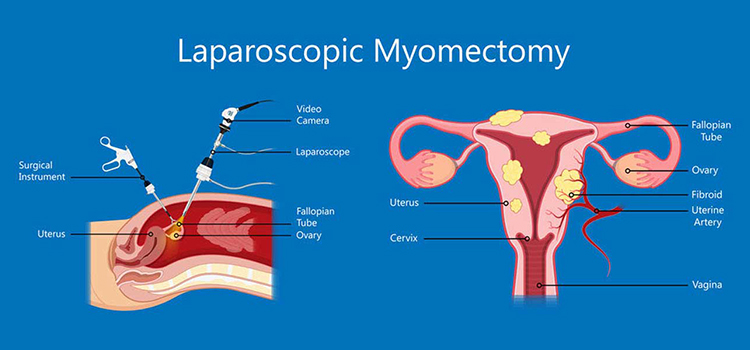Myomectomy

Myomectomy is a surgical procedure that is used to remove uterine fibroids, which are noncancerous (benign) growths in the uterus. It is often done as an alternative to a hysterectomy, which is the surgical removal of the uterus.
There are several reasons why a myomectomy may be recommended:
- To alleviate symptoms caused by fibroids such as heavy or prolonged menstrual bleeding, pelvic pain or pressure, frequent urination, or constipation.
- To preserve the uterus for future pregnancies, as fibroids can cause infertility or miscarriage.
- To preserve the uterus for non-reproductive reasons, such as emotional, cultural or personal reasons.
- To diagnose and treat a suspected fibroid-related condition such as adenomyosis or uterine sarcoma.
There are several different techniques that can be used for myomectomy, including:
- Laparoscopic myomectomy: small incisions are made in the abdomen, and a laparoscope (a thin tube with a camera on the end) is used to guide the removal of the fibroids.
- Abdominal myomectomy: a larger incision is made in the abdomen, and the fibroids are removed through the open incision.
- Hysteroscopic myomectomy: a hysteroscope (a thin tube with a camera on the end) is inserted through the cervix and into the uterus, and the fibroids are removed through the vagina.
Recovery time and the length of the hospital stay will vary depending on the size and number of fibroids removed and the type of surgery performed. Most women can return to their normal activities within a few weeks, but it can take a few months for the body to fully heal.
